
Like most armorers, I build many of my own tools. Fencing as a sport is small enough that the special-purpose tools are either unavailable or expensive. On this page you can see a few of the tools I have built.
Universal Tester
I use this device both for troubleshooting and also for equipment controls
at larger tournaments. It can test body cords, saber mask cords, lames,
foils, epees, and sabers.
Following are some pictures of the universal tester.

In this picture you can clearly see the LCD display that shows both a bar graph and a numeric value that gives the resistance in each of the three lines. The colorful label was designed in AutoCAD, printed on photo paper through my Epson, glued to the aluminum using spray adhesive, and sprayed with clear coat.
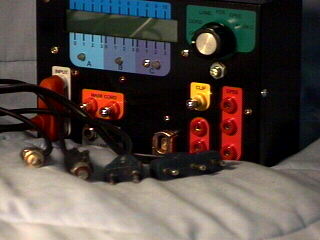
This is the 'octopus' body cord plugged into the inputs. It allows me to connect weapons with different connectors to the tester. From right to left: 3-prong epee, 2-prong, Carmimari, and Leon Paul.
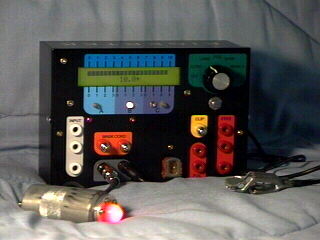
No universal tester is complete without accessories. For testing lames I use this weight, complete with an indicator LED on the top that tells me when the measured resistance exceeds 5 ohms. Notice that there is now one large bar graph instead of three smaller ones.

If you took the cover off the back, this is what you'd see. I made the circuit board myself using the toner transfer method. The circuit is basically three separate digital ohmmeters, which each use a separate battery for isolation. However, the refresh rate is much higher than a normal DMM so transients are picked up easily.

Side view with no cover on.
This project took me about two weeks to build. There are a few additional things I'd like to add to it including a software auto-calibrate, but it's pretty much finished.
Perfect Fencer
During a fencing camp, I had the sudden need of a little device that would allow me to quickly check if a reel or floor cord was not working properly. This little device is the result:
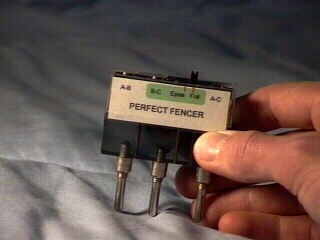
There are three buttons on the top of the device to connect every combination of the A, B, and C lines. The slide switch makes the B-C button normally open or normally closed.
Calibration tool
I needed a way to calibrate the universal tester, so this little project is a decade resistor box with only one decade... :)
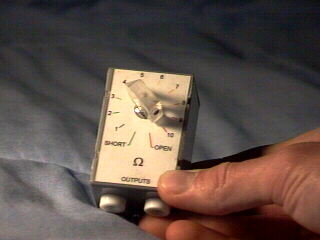
Inside it uses 10 20ohm trimmers that are set to the appropriate resistance. At school we have some highly accurate Fluke test equipment I used to set this box.
Tip kit
The most common repair an armorer typically makes is a tip repair. For convenience, I put my most commonly used tip tools in this custom leather pouch.
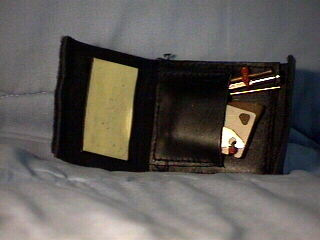
The yellow pad is a refrigerator magnet with a post-it glued on for contrast.
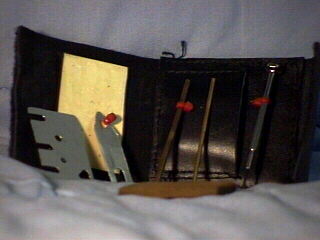
From right to left: Screwdriver for tip screws, small brass rod for cleaning epee contacts, small brass tube for cleaning Ulhmann foil points, epee tip shim, shorting device for testing body cords on the strip. The brown object in front is a rust block that I use to clean the brass rod and tube.
